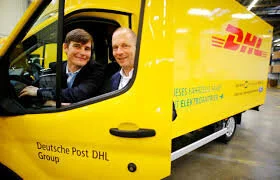Wright Electric Begins Developing Propulsion System For Commercial Electric Plane
By Jake Richardson
Wright Electric, the LA-based electric plane startup, has begun developing the propulsion system for the Wright 1, an electric 186-passenger commercial aircraft. The propulsion system will reportedly utilize 10-14 electric motors.
Aviation research conducted by the International Council on Clean Transportation found that the rate of global air travel emissions might be increasing 1.5 times faster than a UN estimate that predicted a tripling of airplane CO2 emissions by 2050. Bringing all-electric planes into the picture would help reduce these emissions.
Jeff Engler, Wright Electric’s CEO, answered some questions about the work for CleanTechnica.
How long have you been developing the Wright 1 and when will it be ready for testing?
At the end of January, we announced our engine development program for the Wright 1 and demonstrated a preview of its motor and fan during an event in New York. We intend to conduct ground tests of its motor in 2021 and flight tests in 2023. The motor development program is the next step towards building its narrowbody class aircraft. We will be simultaneously conducting aerodynamic tests on its fuselage, which will inform the propulsion design. The company expects entry of service of its flagship Wright 1 in 2027-2030.
What kind of propulsion system will it have? Is it multiple propellers on each wing? Will it utilize tail props as well?
The aerodynamic tests we conduct on the plane’s fuselage will inform the propulsion design.
What is the battery chemistry and storage capacity?
We haven’t selected a final chemistry but are exploring lithium-metal and lithium-sulfur.
How much does the battery pack weigh…it is lighter than the weight of aviation fuel at full capacity for a conventional jet or prop plane?
It weighs roughly the same as the weight of aviation fuel at full capacity.
What will the plane’s range per charge be?
Our aim for the Wright 1 is to have a 1,000 mile range.
How long will it take to charge the battery?
Batteries will be quick-swapped at the airport terminal. Swapping will take 20 minutes.
Are you manufacturing your own chargers as well?
Yes we are.
Are you using a conventional plane body and cabin or manufacturing your own?
We’re manufacturing our own. It will be similar to a conventional plane body but with modifications to improve the aerodynamics.
Are you making the commercial passenger plane for easyJet?
Wright Electric is partnering with easyJet to make the Wright 1, and we are thankful for their commercial, operational, and maintenance insight. Their support will help ensure that the plane which is developed can work for any airline, including easyJet.
If you don’t want to reveal the price of the Wright 1 at this time, it’s understandable, but about how much more will it be than a fossil-fuel burning plane, and about how long will it take to make back the extra cost in fuel savings because it will use electricity instead of aviation fuel?
The Wright 1 will not only reduce costs through fuel and fuel-related costs like the risk of taxation on fuel, but can also increase customer retention and attraction, adding to an airline’s brand value. The Wright 1 will make it possible for airlines to gain the benefit of carbon-free flying without spending money on offsetting their carbon emissions.
Will the Wright 1 initially be used for short flights between US cities like New York to DC, LA to Vegas, etc.?
Yes.
As battery packs become more robust, can you see all-electric commercial planes achieving flights of 500 miles or more?
Yes.
Article/Source: https://cleantechnica.com/2020/03/08/wright-electric-begins-developing-propulsion-system-for-commercial-electric-plane/







